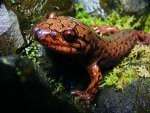M
mark
Guest
Are these aquatic or terrestrial or semi-aquatic?
I have read all of the above and I have no idea which one is true. I have seen pictures of them in the water and on land. This could imply being semi-aquatic, but I would like to know which they are. Thanks in advance,
Mark
I have read all of the above and I have no idea which one is true. I have seen pictures of them in the water and on land. This could imply being semi-aquatic, but I would like to know which they are. Thanks in advance,
Mark

